Cognitive outcomes vs intersectional traumas

We talk with legendary awesome stats guy Mark Olofson — now Dr. Legendary Awesome Stats Guy Mark Olofson — about his research into adverse childhood events and school performance.
It’s some pretty important stuff, about how the intersecting traumas that affect students have some long-reaching consequences.
Who is Dr. Mark Olofson?
You may remember Olofson from his awesome work on our podcasts:
Data shows #vted leads the nation in educators on twitter
How does data-mining affect edtech?
From arduino learner to teacher
and from his Science Saturdays column, here on this fine blog.
But what you might not know is that for the past four years, Olofson has been doing some pretty beefy and hugely important research into adverse childhood events, and how they impact students’ school performance. So we sat down with Olofson and got the straight story.
A full transcript appears below.
How do adverse childhood events affect student performance?
Olofson: I’m Mark Olofson. I’m the research fellow here at the Tarrant Institute for Innovative Education and I just successfully defended for my PhD in Educational Leadership and Policy Studies at the University of Vermont. That is who I am and what I just did. I get to be a PhD.
Interestingly enough, first PhD in my family from either side. Both my mom’s side and my dad’s side, so that’s fun.
Olofson: My research looks at adversity, and development, families and neighborhoods, and school climate, and how all these things intersect and play out.
What I do is I measure cognitive outcomes in young adolescents.
Why this research?
Olofson: I used to teach middle-grade and high school science and mathematics. I worked at an alternative school. I did some student teaching at a really alternative school. I worked at a bilingual school and something that really hit me pretty deeply was this idea that kind of no matter what I do in the classroom as a science teacher, as a mathematics teacher, kids come into the classroom with a whole bunch of other stuff.
I think in some places we think about this as are students ready to learn, are they ready to “do school”, but that didn’t really ring true for me. It seem like there was some deeper issues going on, and that simply a before-school program for 20 minutes to do some mindfulness and meditation — these type of things weren’t really going to address the problem as I see it.

We know that a solid two-thirds of a kid’s academic performance can be great. It can be predicted with them walking in the door. If we just know their home conditions, their socioeconomic status conditions, demographic conditions, all these different things. We can do a pretty decent job of predicting their academic outcomes.
That idea has really stuck with me and led me to get more into:
- What are those developmental influences?
- What are those things that influence outcomes for kids? and
- How can we measure them?
Q: This is a huge topic. How did you pick a place to start?
A: First, take the ACES Framework:
Olofson: The first thing I did was find a way to talk about adversity, with the adverse childhood experiences — or ACES — framework. This research team out in San Diego surveyed like 17,000 people. Then they looked at the trends in those folks’ childhood conditions and compared them to outcomes in adulthood. These were health outcomes: smoking, obesity, heart disease. These types of things. And they saw that more adversity in childhood led to worse outcomes.
Some other researchers have said, “Okay, what if we don’t wait for adulthood? What if we look for these outcomes in adolescents and in young adolescence?” They’ve been able to see a lot of the same things.
We know that these adverse childhood experiences are good predictors for adolescent and young adolescent developmental outcomes. And those can be behavioral outcomes, internalizing behaviors, externalizing behaviors and of course, cognitive outcomes, which is what I used in my study.
Add in a model of child development…
Olofson: A developmental model that really spoke to me, and that’s really widely used in the field, used by like the World Health Organization, used by the CDC, is this: the bio-ecological model of development.
What that means is that it’s important for us as researchers to understand all the different contexts in which somebody’s development takes place. We need to know about the family life, we need to know about the neighborhood. We need to know about the school. We need to know about peer interactions.
We think about development as happening as the individual interacts with these different systems that they’re embedded in; but also in understanding that these different systems interact with each other. The bio-ecological model also goes up and thinks about, “There are these larger societal contexts,” right.
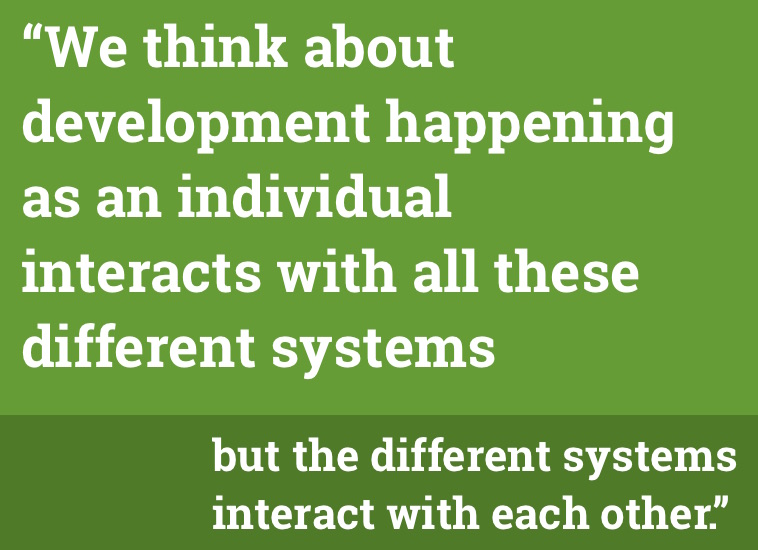
And tie the two together with structural equation modeling.
(It’s simpler than it sounds.)
Olofson: In my work specifically, I look at the families, the neighborhoods and the schools. Then I also look at the individual child’s adversity, right. I use the school’s stat’s models and structural equation modeling with latent variables.
I created a model for adversity.
Oh, oh and let me tell you about this data. Oh man, this data.
Q: There’s this cool data?
Olofson: It’s collected by the US. It’s housed at the University of Michigan, it’s nationally representative. It’s called the Panel Study for Income Dynamics. They’ve been collecting all this interesting data on folks. They started back in the late 60s and they followed these families and the people in these families consistently all the way through.
Back in the late 1990s they decided they were going to get a whole bunch of information about the kids in particular in these families. They collected a whole bunch of data on them and it allows us to get a really rich portrait of these kids’ lives.
So I go in, I take all these data, I pull all these discrete indicators that are about adversity and I make a latent variable for it, right? Now I’ve got an indicator of adversity.
It can be really complicated and that’s why I boiled it down to really looking at school safety. School safety was things like fighting in the halls, verbal abuse among teachers, among students, weapons, drugs, alcohol; these sorts of like hard indicators of “Is the school a safe place or not?”
I chose that because it’s so important for elementary and middle-school kids to be at a fundamental level, have school be a physically safe space so that they can start to form the relationships with teachers, and with school staff and with each other that we know lead to better learning, right? If you don’t have that fundamental school is a safe space in there then those relationships aren’t going to happen, because it’s going to be toxic space, it’s going to be a scary space, and people don’t form relationships when they’re worrying about their physical or mental health. That’s my school safety bubble.
What I did through the course of three different studies is I built up these measurements and then I started relating them to each other.
Conflicts affect kids. Kids have these cognitive outcomes. The kid is measured by the adverse childhood experience and I also do include demographic controls, which are really important, because otherwise you’re saying that like all kids are the same, which is not true.
What I really wanted to see was, is there a difference for how school safety works for kids with high adversity versus low adversity? The model showed that increases in school safety helped everybody; when we pooled everybody from different adversity levels into the same bucket, it helps everybody.
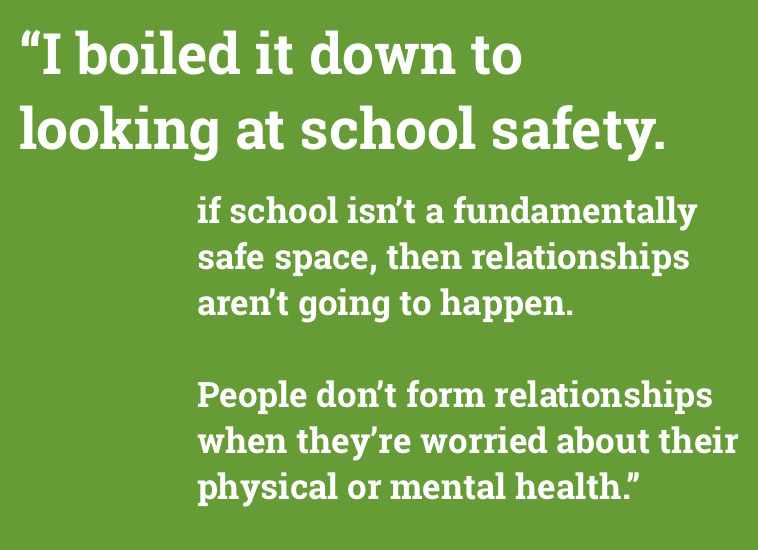
If you increase school safety, we see higher cognitive outcomes. That’s great, but for kids with high adversity, if you make the school safer, you don’t get the increase in cognitive outcomes.
Wild. That’s a huge finding.
Olofson: It goes back to the idea that schools can only do so much and that there is a threshold of adversity of kids walking in the door with enough bad stuff going on that it kind of doesn’t matter what you do in the school, because all the stuff at home:
- they live in a home characterized by conflict;
- they are coming from neighborhoods where they don’t feel safe walking on the street;
- they don’t have an adult in the neighborhood that they identify with;
- if the people in their home are their parents are not;
- if somebody’s been incarcerated;
- if there’s substance abuse in the home.
You get to a certain level of all this bad stuff is happening and it doesn’t matter how good you have schools, you’re not going to have a positive outcome.
What this means, and what this means in our local context first, is that schools matter.
Because for those low and middle adversity kids, which is a lot of kids, you make the school more safe, and that’s when you get the better outcomes. It’s a great argument.
We also know that you make the school safe you get better relationships; and those interpersonal relationships between adults and kids can help kids from highly adverse conditions.
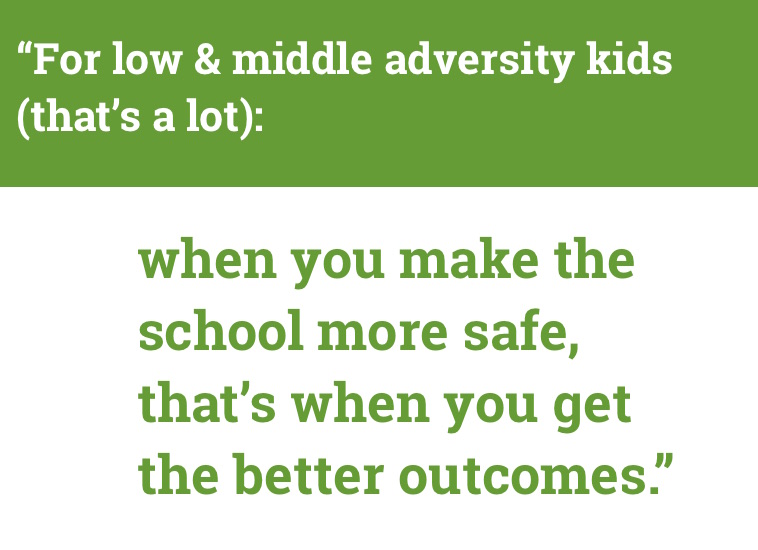
We know that that’s true and we know that like principals and leadership make a big difference when you’re trying to do school reforms of this type, when you’re trying to improve your school climate you need strong leadership with good vision to say this is what we’re going to do and this is why we’re going to do it, right. All that stuff is true.
But what this final conclusion really points out is that just working on your school isn’t enough.
We also need to think about how can we make our neighborhoods and our communities better to support these kids, how can we help families be better and how can we start to address those fundamental pieces of adversity in a kid’s life.
If we want kids to be able to perform well at school, and have high cognitive functioning, and be able to get into the workforce, get into additional secondary education — all these things — it’s not going to be enough just to have a discrete program at the school. It can’t be: “Oh, this is what we’re doing to help kids and we’re going to have a zero tolerance policy on fighting.”
We need to think about wraparound services, and what folks call like “packages of policies.” That means everything from improving food security at the home and improving working conditions for parents. We go back to that whole map of things that intersect, that whole bio-ecological map. How can we help make connections, make stronger families, make stronger neighborhoods and help with wraparound support for kids?
For me, that was really kind of one of the big punch lines for this research.
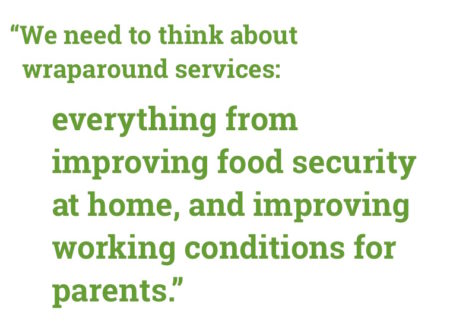
Even though I’m an educator, I come from teaching. I come from schools, and while I know that schools can do a lot, schools can’t do everything.
When we think about what does it mean to help kids from low socio-economic conditions to succeed, right, what does it really look like to help them?
I think that it’s important for us when we’re individually working with kids, to keep in mind that there’s this whole constellation of things that ends up being reflected in an endpoint. For us as teachers, as school leaders, as citizens in our community, and as voters in the state of Vermont, we need to think more widely about what types of policies, what types of programs are going to be necessary at these multiple different levels to support all kids to be able to be successful in our state.
Q: How did you come up with your research question?
Olofson: That’s a really good question. I think I got to my research questions in a few different ways.
I’ve been working with this framework for a while now. It’s really kind of directed my attention, thinking about what teachers can do and what are the domains that teachers can effect. I think also part of it for me is being able to be embedded here at the University of Vermont, and be surrounded by people who are talking about similar things, and thinking about similar things. Everything just sort of like percolates and kind of combines into some question that then I get to go out, and research and see “Is anybody tackling this same stuff in this same way?”
Then starting to slice things into discrete and testable research questions; getting to work with other students, like peers in my doctoral cohort, and with the great research team here at Tarrant. I did always have this strand of the importance of communities, and neighborhoods and families, this wider constellation of influencers and the outcomes, but… it’s just there’s been a lot of focus and I really appreciate that about kids and really having kids at the center.
Q: What do you hope are some concrete steps that result from the findings of your research?
Olofson: The first paper for my dissertation has been published in Child Indicators Research, 2017, and the other ones are in process of submission to journals. The outcomes from this research and additional research have the ability to allow me to speak and to write directly for types of policies that — and policy is such a big chunky word and it just means things we should do, be those formalized things at the state level or for me working in more at a community level where you can have sort of direct effects to influence the way that different organizations, different schools think about these things.
Being able to add to these collective bodies of research, and be able to nudge in certain directions, and to be able to provide additional pieces of evidence, that’s really right now where I see my work. Just like before when I said the ACEs started looking at only adults, but then they saw they could look at adolescents? I’m adding to the emerging literature that says we can also see outcomes in elementary and middle school, right.
I get to push that down to that level which helps us think about, “Oh, adversity has direct effects on my elementary school kids, and adversity measured in these ways.”
Q: That’s where the richness of your stats background comes in and that’s where you get to apply of the awesome stats knowledge that you possess.
To point out that you can make amazingly graded pictures of data and make it tell you amazing things just by using equations.
Olofson: That’s one of the things that I think moved me over into being a quantitative researcher for my dissertation work, because I got exposed to some cool methods that hit me at a personal level. That was like, “Oh, you can do really interesting, descriptive and rich work if you go down the right routes with your methods.”
Yeah, so being able to influence the way that these questions are tackled? Being able to influence the types of indicators or considerations that we make when we’re asking questions, and then being able to add to a growing consensus about what’s important in the lives of kids, in the development of kids? And then on top of that being able to add to what types of policies or programs should we be arguing for in order to help kids that are coming from highly adverse conditions?
The larger goal was to be able to have an impact with my research.
Q: Do you think that there’s anything in your experiences as a teacher that informed the choice of your research?
Olofson: Absolutely. As a teacher I saw all types of kids come through my door and I had the direct experience of being able to sometimes make an impact. And then other days you just had to give kids space because stuff had happened. Stuff that I couldn’t control.
For all students, you can’t be a social worker, and a surrogate parent and a safe person in the neighborhood. You also have to be a teacher.
I really saw that. I saw that kids day to day would be different. In a school where I worked with an advisory system, and I got really close with my advisees, and got to hear personal stories from kids, and helped connect kids to services.
How am I going to, coming from sort of a traditional teacher background, go and have a conversation about accountability and schoolwork with a student knowing that there’s all these other things in his or her life that are going on, right?
Being able to add to this way of thinking about kids in the classroom as human beings who have these conditions at home, these conditions in their neighborhood, these fundamental conditions and experiences in their childhood, can that change the conversation of:
“This is an incomplete. I can’t believe this is an incomplete. This was supposed to be done two weeks ago.”
Can we change that conversation, because that’s not doing a kid any favors and it’s not helping with their learning. It’s not helping with their overall development.
Q: What’s the one takeaway that you hope that educators get from learning about your research?
Olofson: It may seem a little conventional but I think it’s the most important thing and its relationship with kids. It’s just so vital for every kid to have a solid relationship with an adult in their life. You can be that adult.
You can’t be that adult for every kid in your classroom and you don’t need to be, but these kids need relationships. Potentially they don’t have strong relationships with adults, and as a teacher you can be another person, another adult in their life who is holding them to unreasonable standards that they don’t understand and that they don’t have the capability because there’s too many things going on for them to meet those standards.
Or you can be an adult that they form an interpersonal relationship with. And that they can start to identify with, and find a safe space. And be able to express themselves and be able to like learn and grow and open up.
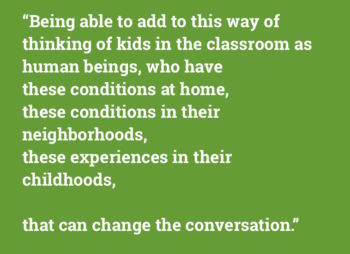
I just think that it’s so important because teachers are right there. They see kids every day.
And it’s not just teachers. It’s principals, it’s staff members. Kids just need an adult. They need an adult to identify with.
You don’t have to take care of everything in a kid’s life. You just need to be a steady solid understanding and open presence that they can form an interpersonal relationship with. I’ve seen a special educator working with a kid who’s not even on his caseload that he just sees in a hall and like they get lunch sometimes, and having a fundamental change on that kid’s life, right. I’ve seen like random after-school coaches who don’t even have this student in their class, but you just hang around a little bit before practice and after practice and ask them how they’re doing. Ask them if when they go home if there’s going to be somebody there; these types of things can make a really big difference.
Yeah, I think that being open to having relationships, to being that solid steady adult in a kid’s life, because it may not even seem like it was that big of a deal to you, but it can make a world of difference to them.
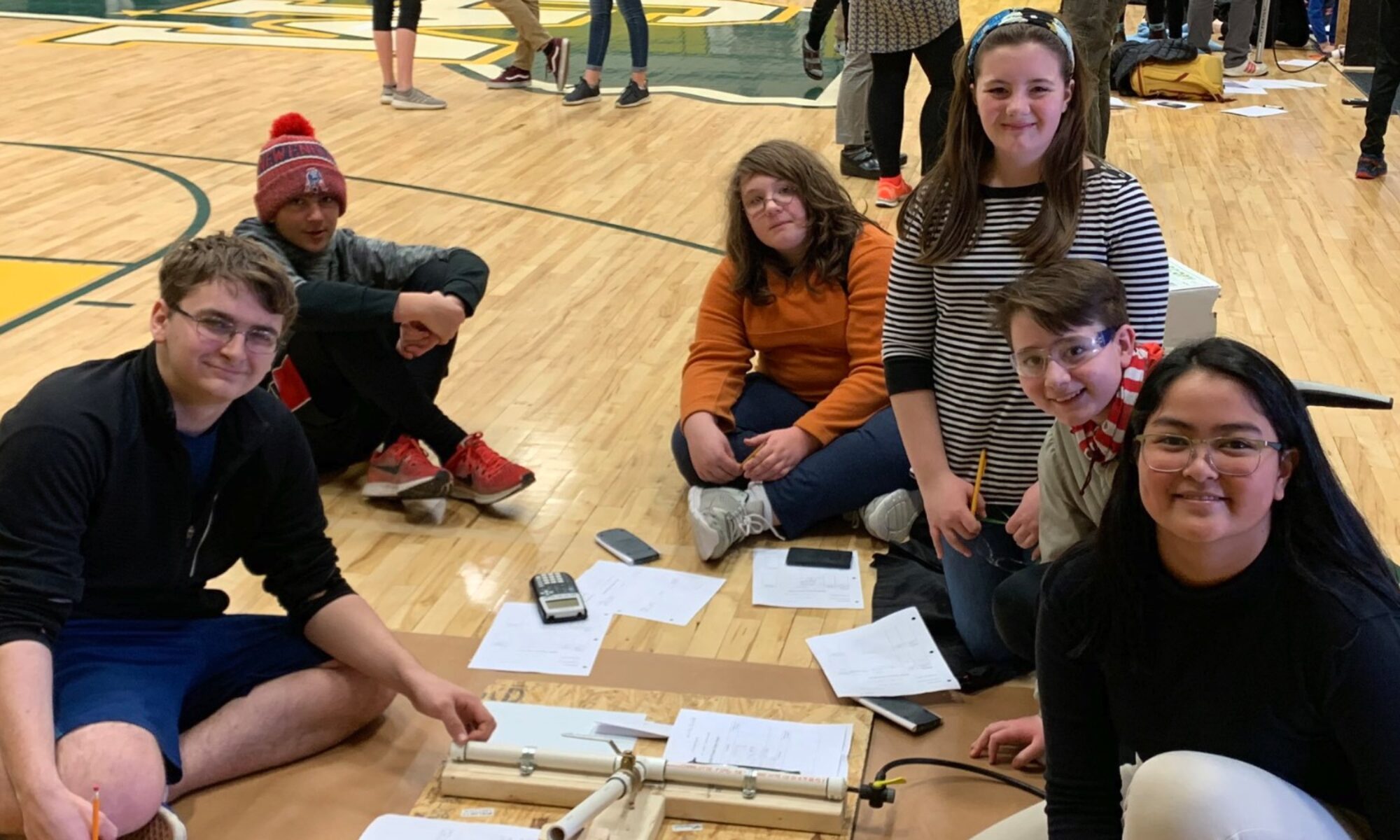

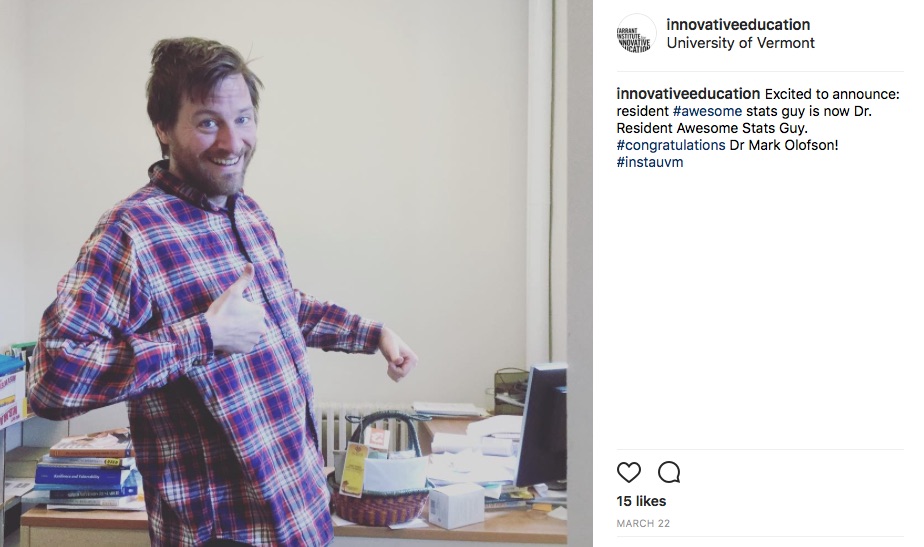
Thanks for sharing. I read many of your blog posts, cool, your blog is very good.